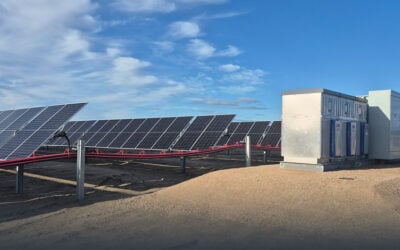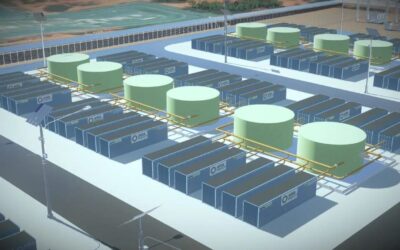
A ‘first of its kind’ microgrid will be installed at a California substation, where it will use a combination of lithium-ion batteries and green hydrogen to provide 48 hours of back up.
Shortly before the end of last month (27 April), the regulatory agency California Public Utilities Commission (CPUC) approved investor-owned utility (IOU) Pacific Gas & Electric’s proposed 8.5MW microgrid project in the state’s famous Napa Valley wine region. It has been described as the first long-term clean energy substation microgrid in PG&E’s service territory.
As regular Energy-Storage.news readers and California energy sector observers will know, the state’s three IOUs sometimes enact public safety power shutoffs (PSPS). In a PSPS event, power lines to communities in areas of high wildfire threat risk are de-energised to prevent them causing or exacerbating a fire situation.
The knock-on effect is that the communities are then without power from the grid, sometimes for days on end or more, rather than a few hours of inconvenience.
Try Premium for just $1
- Full premium access for the first month at only $1
- Converts to an annual rate after 30 days unless cancelled
- Cancel anytime during the trial period
Premium Benefits
- Expert industry analysis and interviews
- Digital access to PV Tech Power journal
- Exclusive event discounts
Or get the full Premium subscription right away
Or continue reading this article for free
One way of mitigating this, which California is exploring, is to put microgrids that can be islanded from the main grid in those communities, typically using solar PV paired with battery storage and some form of diesel or other thermal generation as backup for longer outages.
In this instance, PG&E held a competitive solicitation seeking proposals for a microgrid at its Calistoga substation. The winning bid it picked out came from the battery energy storage system (BESS) arm of Energy Vault, the startup better known for its novel gravity-based energy storage technology.
As reported by Energy-Storage.news at the very beginning of this year as Energy Vault was appointed, the microgrid at Calistoga the firm proposed would be an 8.5MW system capable of discharging 293MWh of energy over 48 hours.
It would do this by pairing a lithium-ion BESS with hydrogen storage tanks and fuel cell technology, with the company dubbing it BH-ESS – battery, hydrogen energy storage system. Energy Vault would own, operate and maintain the long-duration energy storage (LDES) facility over a 10.5-year contract with PG&E, to which the energy storage company would sell dispatchable power from it.
The CPUC noted that this means the microgrid would still require hydrogen fuel to be trucked over to it – it doesn’t feature an electrolyser for creating green hydrogen onsite – which in itself could present safety risks. However, it would certainly reduce the use of a more immediately harmful liquid fuel in the form of diesel, reducing air pollution and improving air quality, the CPUC said.
PG&E already has approval to fund the US$46.3 million cost of the project, while the CPUC’s decision a few days ago includes a requirement for the utility to submit reports on the project detailing costs incurred. PG&E should also inform how the microgrid is performing on a technical level, share lessons learned and also make sure the microgrid’s resources are used during normal conditions on the grid, not just during a PSPS event or other outage.
Some submissions to the CPUC also questioned the use of transporting green hydrogen, rather than electrolysing hydrogen onsite from renewable sources. While the cost is now projected to be lower than original estimates, it will be tied to the cost of liquid hydrogen fuel, the CPUC’s independent Public Advocates Office (PAO) said, which could impact its cost-competitiveness.
PAO said the utility hadn’t proven the microgrid’s technical feasibility but instead passed that responsibility on to Energy Vault, and questioned why the microgrid idea hadn’t been compared to what it called “potential grid hardening alternatives”. PAO suggested PG&E should be submitting annual reports on the project’s performance too.
Energy supplier Marin Clean Energy, one of California’s community choice aggregators, questioned the use of diesel-burning trucks to bring in the hydrogen, when cleaner alternatives may be available. Marin Clean Energy did however offer its general support for the project overall.
Energy Vault’s energy management system (EMS) will control the microgrid, on which the company hopes to begin construction in the final quarter of 2023, to come online in Q2 2024.





